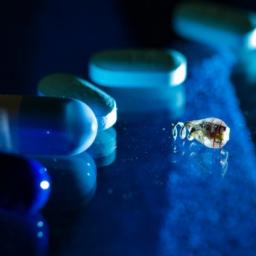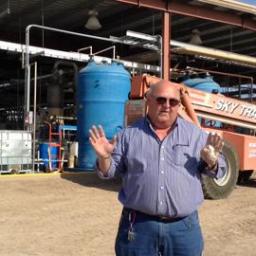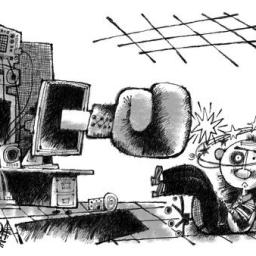In a crowded room, how do you focus on your companion's voice while ignoring the conversations going on around you? A digital model of the cochlea, the shell-shaped organ that serves as an interface between sound waves and the nervous system, suggests the ear begins filtering out background sounds before they even reach the brain.
Studying how the brain hones in on a single voice, a phenomenon known as the "cocktail party effect," can help unlock how the brain perceives sound. But it's not just about the brain. For several decades, researchers have suspected that other parts of the auditory system also play a big role.
http://www.insidescience.org/content/physics-tuning-out/1586California lawmakers have passed a bill that would enable residential and commercial tenants to install electric-vehicle charging stations, provided that they foot the bill, making it harder for landlords to enact lease provisions that would prevent tenants from buying and installing such stations. This to aid the state's goal of having 1.5 million zero-emissions vehicles on California's roads by 2025.
California is home to about 1,900 publicly accessible charging stations with about 5,400 charging outlets, according to the US Department of Energy. More than one in five US charging stations are in California.

When
the first 3-D printer designed to work in a weightless environment is sent up to the International Space Station - as early as next week! - it will mark one small step toward a giant leap for manufacturing in outer space.
"Imagine if you're going to Mars, and instead of packing along 20,000 spare parts, you pack along a few kilograms of 'ink,'" NASA astronaut Reid Wiseman said in a video recorded in March before starting his stint on the station. "Now you don't even need to know what part is going to break. You can just print out that part. ... I really like that, and it'll be fun to play with that in orbit."
[Ed note: finally able to use the "printer" icon in a "space" article. Life is good.]

Among the more interesting aquatic species on our earth is
Polypterus senegalus ("Bichir"), a modern African fish that has lungs for breathing air, and stubby fins. It can use the to pull itself along on land for short periods of time. That makes it an good candidate for research into previously unknown aspects of evolution.
So scientists have raised a bunch of them out of water for eight months to better understand how ancient creatures may have transitioned to life on land. Have a look
here for a picture of the species.
1"The researchers discovered the bichir raised on land were dramatically different than those raised in water. The land-raised fish lifted their heads higher, held their fins closer to their bodies, took faster steps and undulated their tails less frequently and had fins that slipped less often than bichir raised in water. These land-based fish also underwent changes in their skeletons and musculature that likely paved the way for their changes in behavior."
The Bichir is a pretty interesting fish. From Wikipedia, "Bichirs possess paired lungs which connect to the esophagus via a glottis. They are obligate air-breathers, requiring access to surface air to breathe in poorly oxygenated water. Their lungs are highly vascularized to facilitate gas exchange. Deoxygenated arterial blood is brought to the lungs by paired pulmonary arteries, which branch from the fourth efferent branchial arteries (artery from the fourth gill arch), and oxygenated blood leaves the lungs in pulmonary veins. Unlike most lungfish and tetrapods, their lungs are smooth sacs instead of alveolated tissue. Bichirs are unique in that they breathe using a recoil aspiration."
1 So, a bichir is worth a thousand words? Sorry.
[2014-09-17 17:54: Typo fixed: bichir, not bichr. And definitely not bitcher.]

So, how y'all feeling? We can fix that.
DARPA, on the back of the US government's BRAIN program, has begun the development of
tiny electronic implants that interface directly with your nervous system and can directly control and regulate many different diseases and chronic conditions, such as arthritis, PTSD, inflammatory bowel diseases (Crohn's disease), and depression. The program, called ElectRx (pronounced 'electrics'), ultimately aims to replace medication with "closed-loop" neural implants, which constantly assess the state of your health, and then provide the necessary nerve stimulation to keep your various organs and biological systems functioning properly.
The old joke is that there's no need to study biology since eventually it's all just chemistry anyway. But maybe behind the chemistry it's actually all just electrical? If that's the case,
I'd like a USB port wired in, please.
Wednesday, Nature (a scientific journal focused on the natural science) reported something either astonishing or expected, depending on your own personal mood:
close to 4,000 species of microbes have been discovered growing in the cold, dark environment of
Subglacial Lake Whillans in western Antarctica. Each quarter teaspoon of the tea-colored lake water brought to the surface had about 130,000 cells in it.
In the lightless environment of Subglacial Lake Whillans, the microbes rely on minerals from the bedrock and sediments. The pressure of the slowly moving ice above the lake grinds the underlying rock into a powder, liberating the minerals in the rock into the water, and making them accessible to the microorganisms living there. The microbes act on those iron, ammonium and sulphide compounds to create energy.
From the LA Times:
Scientists have discovered a diverse ecosystem of single-celled organisms that have managed to survive without ever seeing the light of the sun. The discovery, reported Wednesday in the journal Nature is not so much a surprise as a triumph of science and engineering. The research team spent 10 years and more than $10 million to prove beyond a shadow of a doubt that life did indeed exist in sub-glacial lakes near the South Pole.

With increasing industrial demand, rising prices, political and environmental concerns,
there's renewed interest in extracting valuable minerals from large bodies of salt water. The most profitable of these being lithium, due to demand for advanced batteries in portable electronics and electric vehicles. This is just a variation on a theme, as lithium "mines" already use brine pools to extract the lithium. But extending the process to seas, oceans, or even the salty output of geothermal power plants, offers the promise of practically limitless supplies (estimated as 230 billion tonnes) of the valuable material.
There's some interesting explanation at
lithiummine.com if you can get past its promotional bent:
Lithium has historically been produced from two sources: brines and hard rock mining. Producing lithium from brines remains the most efficient and cost effective process. The cost-effectiveness of brine operations forced even large producers in China and Russia to develop their own brine sources or buy raw materials from brine producers.
These brines contain lithium derived mainly from the leaching of volcanic rocks and vary greatly in lithium content, largely as a result of the extent to which they have been subject to solar evaporation. They range from highly concentrated lithium deposits in the high altitude salars of Chile, Argentina, Bolivia, Tibet and China where lithium concentrations can be very high; to mid-level brines like Silver Peak, Nevada and Searles Lake, California (a former location of lithium production); to lower concentration brines like the Great Salt Lake, Utah. The lower concentration brines have modest evaporation rates and dilution is constant due to a large volume of fresh water inflow and small lithium concentrations varying between 30 to 60 ppm.

Typically, September and October are a period that sees an uptick in sales of networking hardware - routers, switches, and the like. Not this year. In fact, industry analysts have noted a drop in sales, and
attribute it to increasingly widespread corporate investments in software defined networking (SDN) equipment.
Industry heavyweights like Google, Amazon, Facebook, and others are already heavily invested in OpenFlow and SDN, but it seems to be taking hold on a much wider scale, and not just in ultra-massive data centers.
"We're at the beginning if the S curve [in SDN] with Google, Facebook, Amazon, and NTT adopting and a few others actively deploying it, but it will be several years before it is mainstream," said Guru Parulkar, the chair of the event and executive director at the Open Networking Research Center that works on SDN.
"We will build network infrastructure with white boxes running merchant silicon, open-source network OSs, and services. This will not happen overnight, but it will come."
In the SDN vision, many tasks will be handled as applications running on Linux servers, said Dan Pitt, executive director of the Open Networking Foundation behind the OpenFlow protocol: "The future of the network is Ethernet, x86, and OpenFlow -- nothing is controlled by a single party, it's all community based."
Bad news for Cisco and friends, but they're only suffering what the desktop computer makers suffered a decade ago, and Sun and the rest of the server manufacturers before them.

It's largely bad news out there today, but here's a bright spot to start off your week:
Earth's protective ozone layer is well on track to recovery in the next few decades, per a report just released by a study financed by the United Nations. The good news is due largely to the phase-out of certain chemicals used in refrigerants and aerosol cans.
Without the Montreal Protocol and associated agreements, atmospheric levels of ozone depleting substances could have increased tenfold by 2050, according to a summary document of the Scientific Assessment of Ozone Depletion 2014.
The Protocol will have prevented 2 million cases of skin cancer annually by 2030, averted damage to human eyes and immune systems, and protected wildlife and agriculture, according to UNEP."

Nearly 20 years ago researcher Alex Zettl of the U.S. Dept. of Energy (DOE)'s Lawrence Berkeley National Laboratory (Berkeley Lab) synthesized in his laboratory
a new material never before found in nature: boron nitride nanotubes, the strongest, lightest, most thermally conducting and most chemically resistant fiber known to exist. Now a startup has licensed this technology with the aim of manufacturing boron nitride nanotubes for commercial use.
Nanowerk reports about this new material:These textile-like nanotubes with the appearance of cotton have a molecular backbone 100 times stronger than steel. They are as strong as the better-known carbon nanotubes (CNTs), but much more heat resistant - up to 800C in air and very resistant to many chemical modifications.
"So far, it has been generally accepted knowledge that BNNT are highly inert to oxidative treatments and can only be covalently modified by highly reactive species," Zhongfang Chen, a Professor in the Department of Chemistry at the University of Puerto Rico (UPR), tells Nanowerk. "By contrast, oxidation of CNTs has been proven very convenient and fundamentally important to modify the nanotube structure and morphology via controlled corrosive effects."
There's more about the material on Wikipedia.






